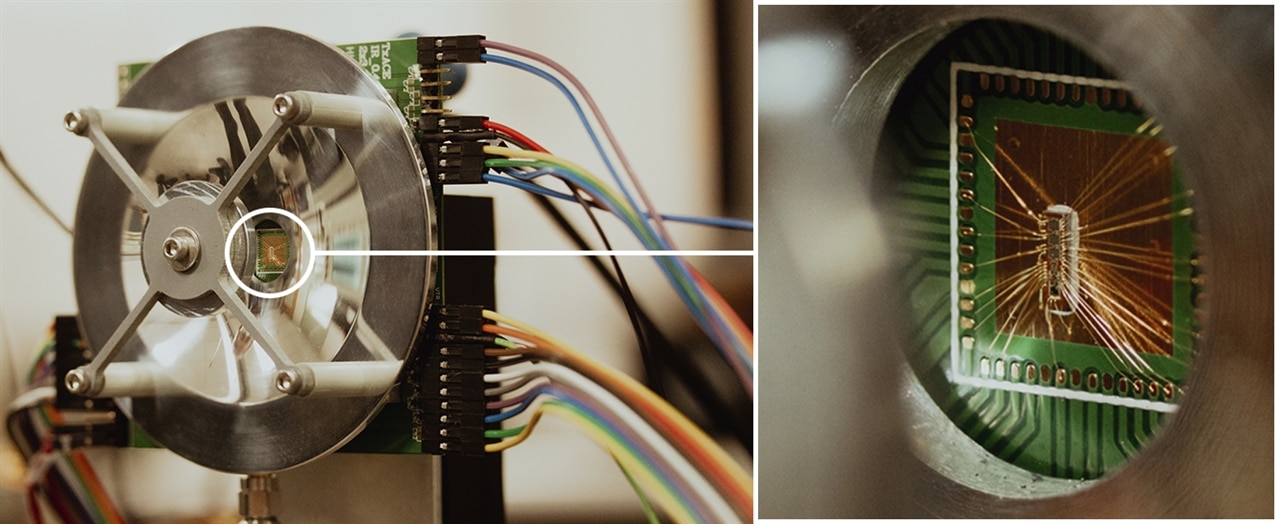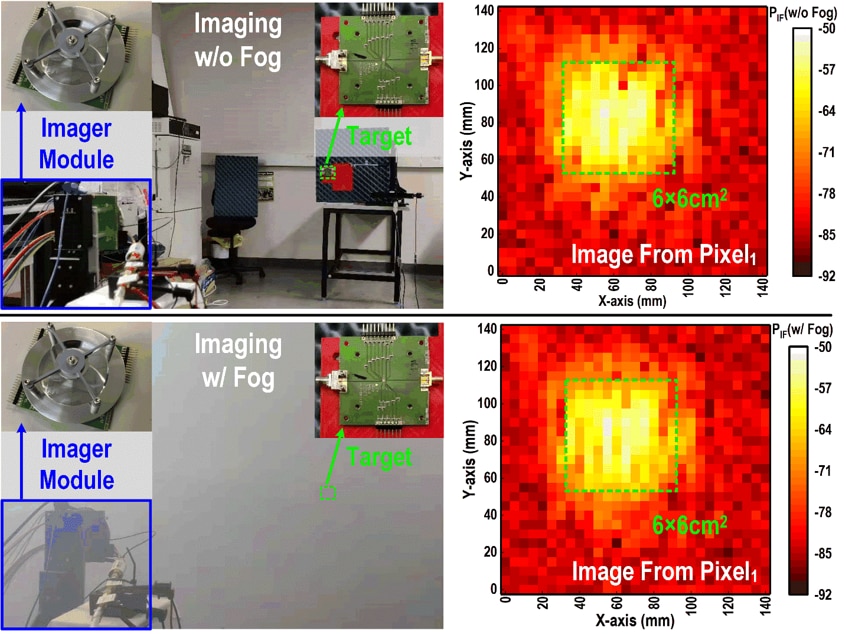
The terahertz microchip can detect an object that can’t be seen due to obstruction, such as fog, smoke, or dust. (Image Credit: University of Texas)
The University of Texas and Oklahoma State University researchers recently unveiled a terahertz imager microchip that integrates into devices to detect objects, generating images even if it’s obstructed by fog, smoke, dust, and smoke. Now, the team is developing a device that can generate images up to 20 feet away for industrial applications. Plus, this technology could be used in cars to help drivers or autonomous vehicle systems travel through low-visibility areas. In this case, a car’s screen could display an object’s pixilated outline and shape, including a pedestrian or vehicle.
“The technology allows you to see in vision-impaired environments. In industrial settings, for example, devices using the microchips could help with packaging inspections for manufacturing process control, monitoring moisture content, or seeing through steam. If you are a firefighter, it could help you see through smoke and fire,” said Dr. Kenneth K. O, professor of electrical and computer engineering and the Texas Instruments Distinguished University Chair in the Erik Jonsson School of Engineering and Computer Science.

The microchip produces a pixilated image of the object, as shown above, where fog obstructs it. (Image Credit: University of Texas)
This microchip releases 430 GHz radiation beams of the electromagnetic spectrum from pixels as small as a grain of sand. These beams move through dust, fog, and various obstacles that block optical light. Then, they bounce off objects and return to the microchip, allowing the pixels to collect the signal for image production. If the terahertz imager doesn’t come with external lenses, then it features the microchip and a reflector to provide greater imaging distance and quality while consuming less power.
The team used complementary metal-oxide-semiconductor (CMOS) in the imager’s design, making it affordable. This is the same IC tech that helps manufacture consumer electronics in bulk. So far, the researchers are the first to prove that CMOS offers a viable solution and have developed various new applications.
“The key thing about the terahertz imager is making the pixels small and low power. You need to integrate a transmitter, receiver and antenna in such a small area,” said Dr. Wooyeol Choi, assistant professor of electrical and computer engineering at Oklahoma State University.
Have a story tip? Message me at: http://twitter.com/Cabe_Atwell
